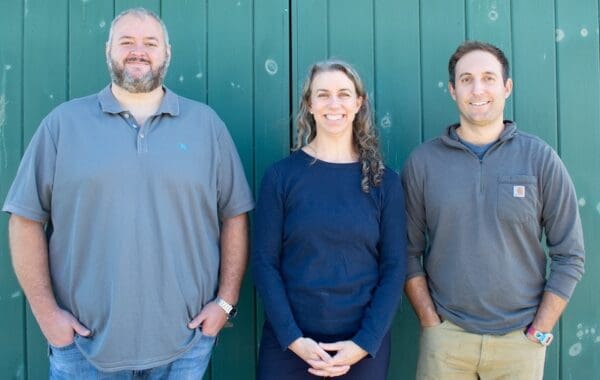
Greater Boston residents are collaborating to address housing affordability and housing quality issues in their communities. Photo: Shutterstock
Massachusetts has long faced an affordable housing crisis. There aren’t enough new housing developments. The ones that developers do build are often either of poor quality – for instance, lacking working heat or hot water – or aimed at attracting new, wealthy residents. Traditional measures of housing quality often don’t take into account the stories, perspectives, or individual experiences of community members. That’s why CLF’s Healthy Neighborhoods Study has developed its own “Community-Derived Affordability Scorecard” – for and by residents.
CLF organized the Healthy Neighborhoods Study with MIT a decade ago and recruited 45 resident researchers from nine Massachusetts communities, with funding from the Robert Wood Johnson Foundation. The study’s goal is to better understand how to create healthy communities for residents. When deciding on a new project two years ago, a team of resident researchers in the study decided to develop a new tool to evaluate whether a housing development was affordable and high quality.
Reflecting residents’ priorities
For Gail Rodrigues, a community meeting she facilitated to pilot test the Affordability Housing report card crystallized her motivation to share the report card. Rodrigues is a site coordinator for the Healthy Neighborhoods Study. All concerned residents attending the meeting were people of color. Almost all the decision-makers were white. Clearly, the community needed stronger, more diverse representation.
As resident researchers developed the report card, they included concerns that aren’t included in conventional housing discussions. If you’re renting your home, does the property owner live nearby? Are they responsive to your needs? When something breaks, is it fixed? Is it fixed in a reasonable timeframe?
The report card consists of four sections:
- An Affordability Scorecard that compares affordability of housing developments as typically defined (by the Area Median Income) versus defined by community (what people living there can actually afford).
- Standards for Proposed Developments around community engagement, affordability, and other issues for developers to follow when creating a planned development.
- A Framework for Existing Developments to evaluate the conditions of their housing, like quality, landlord responsiveness, maintenance, and evictions.
- An Organizing for Affordability tool for residents and community groups to engage and organize neighbors to support a meaningful definition and vision for affordability.
Tatikqua Austin, a resident researcher who used the report card to assess her Dorchester neighborhood, shared stories with me of landlords who refused to adequately accommodate residents who were elderly, disabled, or living with mental illnesses. Some landlords only responded to in-person visits, not calls or emails, cutting them off from house-bound renters. Others were inflexible in scheduling repair appointments, making basic repairs inaccessible to people who couldn’t match their schedule.
Worsening living conditions can cause stress, worsen people’s health, and even force people out of their homes. “People are being displaced over small misunderstandings and a lack of care,” says Austin. Traditional assessments of housing quality often overlook these drivers of displacement. Austin also noted that the report card showed the average apartment rent in her neighborhood was around $800 over the rate considered affordable.
Grappling with gentrification
Well-intended changes in communities can also have negative ripple effects on residents. New Bedford, Massachusetts, is a prime example. A long-awaited train line recently connected the city to Boston, making it easier to commute and otherwise visit the city. However, this new accessibility has led to a bigger spike in local housing expenses than some residents can handle.
“Gentrification is happening in my neighborhood. I bought my house for under $200,000, and now it’s worth more than half a million,” says Karen Jenkins, a long-time New Bedford resident and homeowner. “People have to leave to a different part of the city or a different city to meet their needs.”
A soaring home value would be great news if she planned to sell any time soon. But Jenkins intends on living the rest of her life in her home, which has particular historical significance in her Cape Verdean community. She’s happy for the future of her children’s inheritance, but for her, the gentrifying neighborhood just brings unaffordable, skyrocketing taxes.
These complexities highlight the importance of community input. The nuances of what it means to live somewhere can only be understood by actually living there. Any discussions of housing affordability – whether among developers, government officials, housing advocates, or community leaders – should mirror the perspectives and priorities of the residents.
The future of the report card
Now that the Community-Derived Affordability Scorecard is complete, the resident researchers and CLF staff have big plans for how it could be used. They’re setting up a series of workshops with the community-based organizations and community development corporations. The team wants to train the staff and members of these organizations so they can use the report card as a tool when engaging with local stakeholders, city officials and even developers. If you belong to an organization that would be interested in taking action, just fill out our form and we’ll be in touch!
Shinelle Kirk, CLF’s Senior Research Associate for the Healthy Neighborhoods Study, plans to start discussions with developers to gain more insight into their perspective. She wants to encourage them to embrace the report card as a tool to better understand the communities they’re building in.
When reflecting on the value of the Affordability Report Card, resident researcher Robyn Gibson puts it simply: “We’re all experiencing [rising housing costs]. We know people who are experiencing this. They’re feeling vulnerable, like they’re being pushed out of their community. We’re hoping this report card can empower people.” Supporting residents of communities across Massachusetts is the mission of the Healthy Neighborhoods Study, and resident researchers are proud that their report card will do exactly that.



